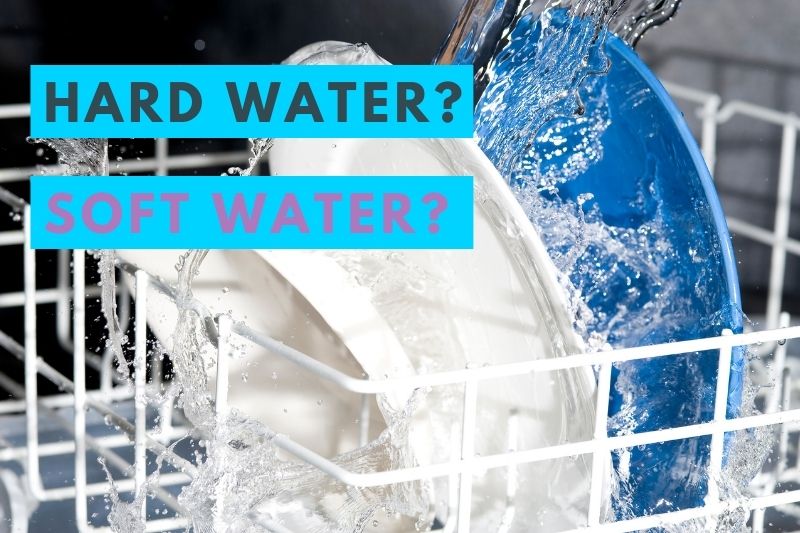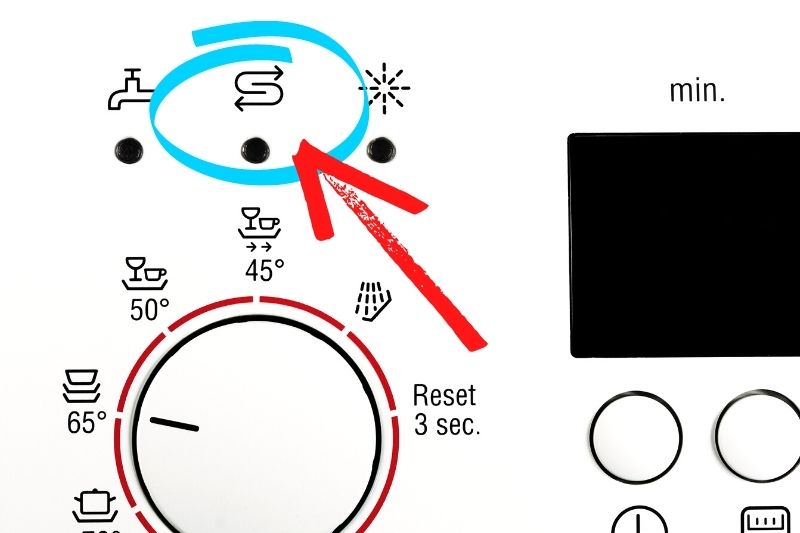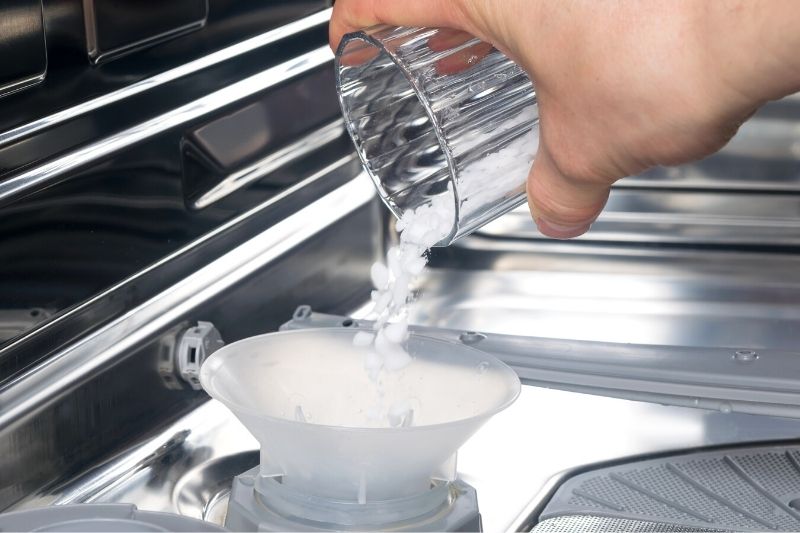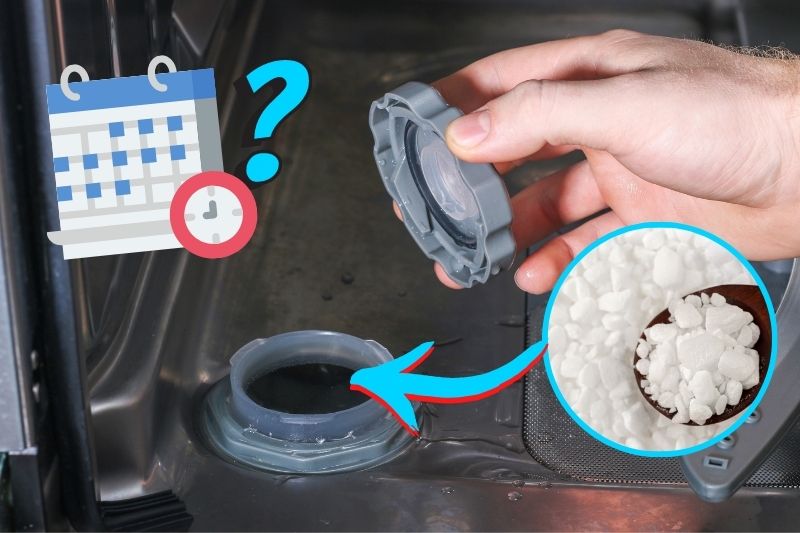Dishwasher salt isn’t something that’s mentioned often, but it’s crucial for achieving the soft water needed to produce squeaky-clean dishes. To avoid a limescale-coated dishwasher, you should ensure you’re keeping on top of your salt refills.
How often you should put salt in your dishwasher depends on the water hardness in your area. In hard water areas, you might need to refill the salt monthly. In soft water areas, you’ll rarely need dishwasher salt. Helpfully, most dishwashers will have a salt refill indicator to let you know when it’s time for a top-up.
Confused by salt? It’s not your fault! I’ll answer some more dishwasher salt-related questions in the rest of this article, including how you know if your dishwasher needs its salt refilled, and which type of salt you need to use with your dishwasher. I’ll sprinkle in some salt recommendations as well.
Check Your Area’s Water Hardness

To know how often your dishwasher salt needs refilling, you’ll need to figure out how hard the water in your home is.
The “harder” your water is, the more salt will be required to absorb trace amounts of minerals from the water. This means that you’ll have to refill your dishwasher salt more often in a hard water area.
You can contact your water supplier to find out your area’s water hardness, and you’ll probably be able to find the information online. For example, Scottish Water’s site charts water hardness levels in different regions of Scotland.
Once you know your water’s hardness level, you can adjust the water hardness setting on your dishwasher accordingly to let the indicator know how much salt is required.
Check your dishwasher’s manual or contact the manufacturer if you’re struggling to adjust your machine’s water hardness setting.
How to Know if Your Dishwasher Salt Needs Refilling

Most modern dishwashers have a salt refill light on the front display that will turn on when the salt is low. Refill the salt when you see this light activate.
Otherwise, you can examine your glassware after they’ve been through the dishwasher. If your glasses are coming out cloudy, it’s probably mineral residue from hard water. You’ll need more salt to counteract this problem.
The inside of your dishwasher suddenly being plagued with limescale is also a good indicator that your machine needs more salt.
However, if your dishwasher is always telling you it needs more salt, this could be an indication that something is wrong and it is using too much.
What Salt Should You Use in Your Dishwasher?
Wondering if you could just chuck some table salt in with your dishes?
Your dishwasher will only be able to use dishwasher salt, not table or sea salt. Crucially, dishwasher salt contains no anti-caking agents, allowing the salt’s sodium ions to successfully swap with the calcium and magnesium ions found in hard water.
Dishwasher salt is a specific product that you’ll be able to find in most supermarkets.
Dishwasher Salt Recommendations
You won’t be struggling to select from a wide range of dishwasher salt brands; in supermarkets, there’s generally a choice between supermarket-own brand and Finish dishwasher salt.
Finish dishwasher salt is pricier than the supermarket-own branded salts, and there’s practically no variation in the product – it’s just pure salt.
I’d recommend forgoing the brand name and getting a cheap dishwasher salt from a popular supermarket like Asda or Sainsbury’s.
Tesco’s own-brand dishwasher salt has a host of negative reviews from customers claiming it rusted their cutlery and made the inside of their dishwasher chalky. However, this may caused by these customers overfilling their dishwasher’s salt reservoir.
How to Refill Dishwasher Salt

Once you’ve got your dishwasher salt, you can’t just pour it directly in with your dishes – this will scratch your dishes and probably make them taste salty.
Your dishwasher will have a salt reservoir on the inside of the machine, typically located on the bottom left, below the lower dish rack. To refill the salt, simply remove the protective cap and pour salt into the reservoir, preferably using the funnel supplied with your dishwasher.
Make sure you don’t overfill the salt reservoir – this will cause the water inside it to overflow. Clean up any salt or water spillage with a cloth before using the dishwasher again and remember to replace the protective cap!
Conclusion
Your dishwasher salt refill rate depends on your area’s level of water hardness. Hard water will need to be treated with more salt, meaning that you’ll probably need to refill your dishwasher salt once a month.
In soft water areas, dishwasher salt will hardly be needed, so you won’t need to refill the reservoir very often.
You can find dishwasher salt in most supermarkets; it’s a separate product from common table salt. Dishwasher salt can be refilled by using a funnel to pour salt into the reservoir at the bottom of the inside of your dishwasher.

A recent uni graduate who likes writing, gaming, and drawing. I’m figuring out housekeeping tips alongside you while trying to provide eco-friendly cleaning options. Let’s find out how to use a tumble dryer together!






